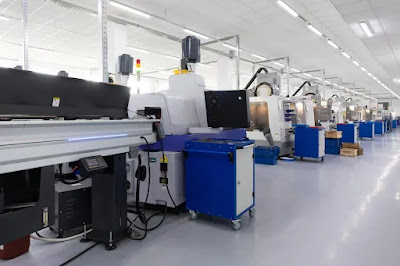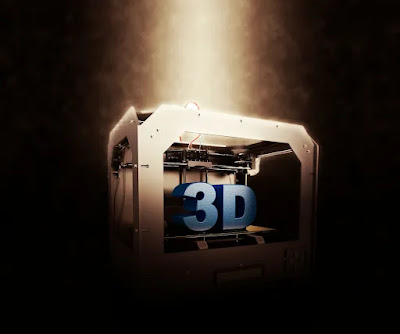A Glimpse at Manufacturing in the Future
Throughout the past few decades, there has been a dramatic change in the manufacturing industry. The way we produce things has changed significantly as a result of technology, from mass manufacturing to customization. And 3D printing stands out as one of the most fascinating and groundbreaking technological developments that have completely changed the manufacturing sector.
By layering materials on top of one another, 3D printing, sometimes referred to as additive manufacturing, creates three-dimensional items from a digital model. Although this technology has been around since the 1980s, it didn't begin to become widely known and used until the early 2000s. Today, 3D printing is employed in a wide range of sectors, including healthcare, education, and the automobile and aerospace industries.
The United States is one nation that has been at the fore of the 3D printing revolution. One of the major investors in 3D printing technology has been the US, and during the past several years, the country's 3D printing market has expanded quickly. In this article, we'll examine the US 3D printing market in more detail and speculate on what this innovative technology's future may bring.
The Situation of the US 3D Printing Industry
The US 3D printing market is anticipated to expand between 2021 and 2026 at a compound annual growth rate (CAGR) of 21.5%, according to a report by ResearchAndMarkets. The rising demand for personalized items, the expanding usage of 3D printing in the healthcare sector, and the expanding use of 3D printing in the aerospace and automotive industries are some of the drivers that are fueling this rise.
The US 3D printing market was estimated to be worth $3.3 billion in 2020, and it is anticipated that this amount will rise to $10.4 billion by 2024. This substantial growth demonstrates how quickly 3D printing is taking over as a standard production technology.
Several of the major players in the 3D printing business are also based in the US. The US-based businesses Stratasys, 3D Systems, and HP have all contributed significantly to the industry's expansion. From desktop printers for amateurs to large-scale industrial printers for industry, these businesses provide a variety of 3D printing solutions.
The 3D printing industry's growth drivers in the US
As was already said, a number of variables are propelling the US 3D printing market's expansion. Let's examine some of these elements in more detail.
Customization: The capacity to design things specifically for a customer is one of the main benefits of 3D printing. This is crucial in fields like healthcare, where each patient is different and needs individualized attention. Custom implants, prosthetics, and even organs can be produced via 3D printing, dramatically enhancing patient outcomes.
Saving Money: Manufacturing expenses can be reduced with the use of 3D printing. Conventional manufacturing processes frequently call for costly tooling and machining, which can raise production costs. With 3D printing, complicated pieces may be created in a single run without the requirement for tooling, which eliminates the need for assembly and minimizes waste.
Rapid Prototyping: Rapid prototyping is also a great application for 3D printing. In the past, making a prototype could take weeks or even months because manufacturing couldn't start until molds or tooling were made. A prototype may be produced using 3D printing in a matter of hours, allowing for quick iteration and development.
While examining the quick development of the 3D printing business in the USA, there are several additional significant elements to take into account in addition to those already mentioned:
Education and Training: As 3D printing spreads across numerous industries, there is an increasing demand for qualified personnel who can operate and maintain 3D printing machinery. As a result, educational initiatives and training courses with a 3D printing technology focus have been developed.
Materials Improvements: Over the years, 3D printing materials have advanced significantly. Today, a vast variety of materials, including plastics, metals, ceramics, and even living cells, can be utilized for 3D printing. The possibilities for 3D printing keep growing as new materials are created and put to the test.
Increased Accessibility: Increased Accessibility is improving, making 3D printing technology more available to both people and small enterprises. Now that desktop 3D printers are reasonably priced, amateurs and business owners can produce their own goods without the need for expensive machinery.
Innovation and Collaboration: The 3D printing sector is renowned for its inventive and collaborative culture. Online maker and designer communities exchange thoughts and works-in-progress, which spurs the invention of new 3D printing-related goods and uses for the technology.
Potential for Disruption: As 3D printing technology develops and spreads, it has the potential to change the way that conventional manufacturing businesses operate. A dramatic change in the manufacturing environment could result if 3D printing were to eventually replace mass production techniques with the ability to produce personalized products on demand.
Conclusion
In the USA, the 3D printing market is expanding quickly due to features including customization, cost savings, quicker prototyping, and sustainability. There are opportunities for education and training, material breakthroughs, improved accessibility, collaboration, and innovation, as well as the possibility of disruption, as the industry continues to grow. With the ongoing advancement and widespread use of 3D printing technology, the future of manufacturing seems bright.





_11zon.png)

No comments:
Post a Comment